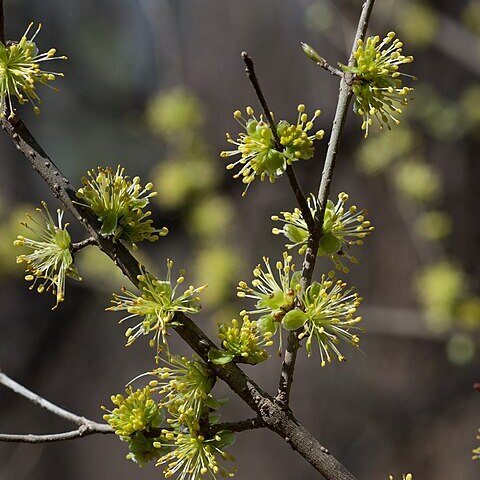Shrub, or southward a small tree; lvs lanceolate or oblong, 4–8 cm, slenderly acuminate, entire or remotely serrulate, gradually tapering to the petiole; fls before the lvs, the staminate in dense, subsessile, lateral fascicles, the pistillate in panicles 1–2 cm; fr slenderly ellipsoid, often curved, 1–2 cm, not more than half as thick; 2n=46. Swamps and wet woods; c. Ill. to s. Ind. and s. Mo., s. to La. and Miss., and irregularly to S.C., Fla., and Tex. (Adelia a.)


